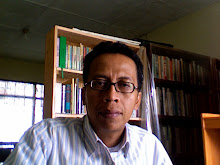By Deasy Ariyanti
Some people maybe do not know what prose is and how its form and type look like. For students at letters faculty, maybe it wouldn’t be so hard to understand or explain the definition, structure and differences among different literary works. Here I am trying to explain my understanding on prose as a literary genre.
Prose literally means “straight-away-directly”. Prose is something that shows a beautiful way to write or read, actually. In my opinion, prose is one of literary products that easier to be understood, even though it has some differences with other literary products but it has something interesting that makes it fascinating.
For instance, there are so many literary works, but we could divide it into two major categories: prose and poetry. Literary works, including prose, are novel, short story, drama, comic, etc.
There are several differences between prose and poem. In my opinion, prose uses daily speech (language that used in daily activity), the form of which is clause, using denotative meaning, prosaic, and emphasize clarity. It is so different with poem. Poem uses a poetic language, its form so tight, referring to connotative meanings (figurative language or metaphor).
In analyzing prose, I use a different way. In analyzing poem we are a little bit confuse in defining the meaning. Yet prose is different. When I read a prose, for example short story, I’m not only ”just reading it”, but also trying to understand what the author means, what kind of technique she applies, what about her character, plot, narrator utterances, figurative language, world view, theme and the message or impression inside.
In analyzing poem, I need to note the figurative language (the metaphor, character limbs, the semantic and syntax or maybe furthermore. We can also consider the intertext comparison, for example in reading the poem “Nyanyian Angsa” by Rendra, we can compare his character which is named Maria Zaitun with Mary Magdalena in the bible.
Two weeks ago I analyzed a short story. The title is “Kematian Paman Gober” (The Death of Uncle Gober), and the author is Seno Gumira Ajidarma.
I read that story because it was so interesting. I think Seno makes a new prose. He said prose or fiction could be a tool to explain and demonstrate our obsession!
Seno tried to make something different: how to describe and imagine the political situation in a certain era. He said, “If journalism is banned, literature will talk”. In his work, he described the main character Paman Gober just like the president of the “New Order”.
One thing that makes me surprised is—well, I don’t know how to say it—that I am confused. Is Uncle Gober a protagonist or antagonist character? On one hand, Seno imagined Uncle Gober as an antagonist character because he made a conversation between three ducks (Kwik, Kwek and Kwak) that want him to die soon. On the other hand, Seno imagined Uncle Gober as a protagonist. We can see it from the narrator utterances that “although the ducks want him to die soon, yet they all love him. Uncle Gober has power, strength, charisma and many other things that made him to be a super power and to be frightened person among the duck country.
Seno adapted the mess political situation into an easy way to understand a kind of short story. One thing that made the story so interesting situation is that the character is a well-known person: Uncle Gober is one of the well-known characters from Walt-Disney cartoon! And he described and changed the leader of the “New Order” into a Duck! What a funny thing!
That is my opinion. ***
Friday, 20 February 2009
Subscribe to:
Post Comments (Atom)

No comments:
Post a Comment